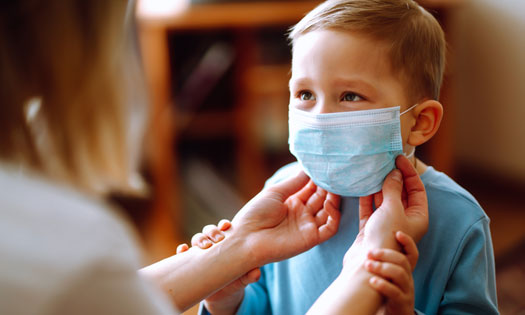Should you combine multiple cosmetic procedures?
A question that I am frequently asked is: “can multiple plastic surgery procedures be performed in one single operation?” The quick answer to this question is yes (you’ve certainly heard of extreme cases such as Heidi Montag who underwent 10 procedures in one day…); however, it’s imperative that all safety concerns be addressed sufficiently beforehand, and that should only happen when combining cosmetic procedures is the best option for the patients. Each patient is unique, and so multiple aesthetic procedures will naturally have different outcomes on their bodies.
In this blog, I explore some of the advantages and disadvantages to having multiple cosmetic procedures at once, and offer my advice for anyone thinking of having multiple aesthetic procedures in one sitting.
Advantages of combining plastic surgery procedures
The most obvious advantage to having more than one cosmetic procedure in a single sitting is that it saves time; the patient requires only one surgery and resulting in a single recovery period, as opposed to multiple surgeries requiring numerous recovery periods, possibly resulting in extra time off work, and a multitude of consultations with your plastic surgeon.
Further advantages to combining plastic surgery procedures is the lowered cost to the surgeon and their organisation. Undergoing multiple surgeries at once requires a single anaesthetist, one consultation and one hospital bed. This will reduce the overall cost for your surgeon, and could see the cost of your surgical procedure drop slightly as a result.
Talking about anaesthetics, since many surgical procedures require general anaesthesia, which always involves risks, going under just once may be considered ‘safer’ (although you have to think about the fact that the anaesthesia will have to last longer, which can also be risky).
It is important to remember that if you desire multiple plastic surgery procedures, you should consider where on your body your surgeon will be operating. A facelift, for example, can easily be combined with a nose job (rhinoplasty), or other facial cosmetic procedures. Likewise, a breast augmentation or reduction procedure could be combined with liposuction or a tummy tuck (abdominoplasty) as they are located on the same area of the body. As such, I wouldn’t recommend a breast augmentation with a buttock lift, as moving a patient during surgery could cause serious complications.
Disadvantages of combining plastic surgery procedures
Combining aesthetic procedures does give rise to a number of potential complications. While a single dose of anaesthetic and requiring the services of an anaesthetist only once may be cheaper, it would need to be a stronger dose, which, depending on the individual, could have a negative effect on the body; the more procedures, the longer a person will be under anaesthesia leading to an increase in the chance of potential complications, such as excessive blood loss.
Furthermore, while one recovery process may sound appealing, the process will be significantly longer, and potentially more painful and incapacitating, as more of your body will need time to recuperate. Depending on the individual, this can cause serious complications, and as such I wouldn’t recommend multiple cosmetic surgeries for an individual who is not fit and healthy – I actually would not recommend undergoing any cosmetic surgery to someone who isn’t fit and healthy.

What are the pros & cons of undergoing multiple plastic surgeries at once?
Anesthesia
Pro: A single surgery means just one time under anesthesia, which can reduce your risk for anesthesia-related complications. Since most complications occur during the time you are going under the anesthesia or coming out of it, combining procedures is a safer approach for many patients.
Con: While a single dose of anesthesia may be more desirable, you may need a stronger dose that enables you to stay under longer and deeper. It’s important to keep in mind that there is a danger that comes with being under anesthesia for any extended period of time. Depending on your age and health status, too strong a dose can have a negative effect on your body and may increase the chance of complications, like excessive blood loss.
Recovery Time
Pro: Every plastic surgery procedure comes with its own recovery timeline. For some procedures, the recovery time is relatively short, while others may take a number of weeks before you are ready to return to regular activities. By combining your procedures, you only have to endure one recovery period.
Con: Having just one recovery period is appealing, but know that your recovery period may be longer and more painful when recovering from multiple plastic surgeries as opposed to a single procedure. You may need to take more time off from work and need assistance from friends and family for an extended period of time.
Costs
Pro: When you have any surgery, you’re not just paying the surgeon’s fees, but you’re also paying for the anesthesiologist and the use of the operating room. By combining surgical procedures, you can potentially save a significant amount of money because you’ll be paying these fees just one time. Plus, your surgeon may give you a discount for having multiple plastic surgeries done at the same time.
Con: If you’re saving money for a procedure, then the higher costs of a combined procedure may seem like too big of a financial goal. It may be easier for you save up what you need to have a single procedure, have that procedure, then save up again for the next procedure.
Results
Pro: In many instances, combining procedures produces improved results. For example, Breast reduction with a lift may give you a better, or more desirable result. On the other hand, if you do just the reduction and take the time to heal you may not feel you need a lift until a few years later. Likewise, combining a tummy tuck and liposuction can go farther in giving you the slimmer waistline you desire than either procedure alone.
Con: When you combine surgeries, it will take more time to see your desired results, since your body needs longer to heal. You’ll also see an increased amount of bruising and swelling. If this does not sound desirable, you may prefer to make small changes over time and ease into your new look. How you want to achieve your aesthetic goals is entirely your choice.

What plastic surgeries are typically combined?
While safety is always the top priority, many cosmetic surgeons are comfortable combining at least two surgeries as long as you’re in good health. The most common plastic surgery procedures that are combined include liposuction and tummy tuck, rhinoplasty and chin augmentation, and breast augmentation with breast lift.
Another popular option offered at Northeastern Plastic Surgery is the mommy makeover, which is a combination of breast surgery, liposuction, and tummy tuck procedures designed to rejuvenate a women’s body after she is done having children. Sometimes, procedures must be combined. For example, when women choose to undergo breast augmentation using fat transfer they must first undergo liposuction to harvest the fat and then they have the breast surgery.
When are surgeries not combined?
If you have high blood pressure, an existing health condition, or your surgeon otherwise deems multiple surgeries to be unsafe, then you’ll have to be content with having one procedure at a time.

Other considerations that go into determining the possibility of having multiple cosmetic surgeries at same time include:
- the patient’s overall health
- the areas where the procedures are to be performed
- the surgeon’s qualifications and experience
- the length of time the patient would need to be under anesthesia
In terms of body sculpting, the most popular combination procedures are:
- Mommy makeover (tummy tuck, liposuction, breast lift and breast augmentation)
- Breast augmentation and breast lift
- Thigh liposuction and thigh lift
- Face and neck lift
- Liposuction and arm Lift
Complementing Procedures
Certain cosmetic surgeries go hand in hand, so you may want to combine multiple surgeries that can be done at the same time. For example, you may need to have a tummy tuck following liposuction in order to get rid of loose skin. It’s also a smart move to combine breast augmentation procedure with a breast lift cosmetic surgery. Or, women who undergo reconstructive breast surgery as part of cancer treatment, may choose breast augmentation.
Having more than one cosmetic surgery at the same time, or having cosmetic surgery procedures at different times both have advantages and disadvantages. A skilled cosmetic surgeon in partnership with an experienced anesthesiologist can make the decision whether they’re able to perform multiple procedures at the same time, or whether they want to perform them separately.



